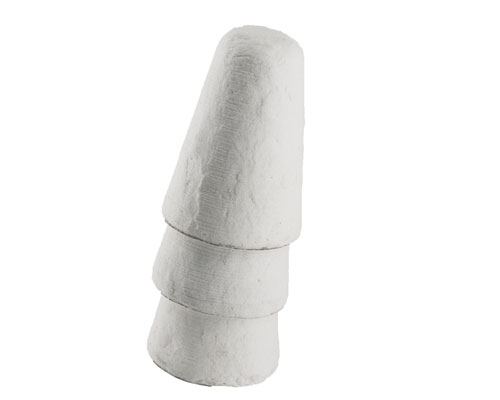There are many types of insulating materials. According to the different working temperature, it can be divided into three categories: high temperature (above 1200℃) insulation material, medium temperature (900~1100℃) insulation material and low temperature (below 900℃) insulation material.
1. High temperature insulation material
The so-called high-temperature thermal insulation materials refer to lightweight thermal insulation refractory materials, such as lightweight clay bricks, lightweight high alumina bricks, lightweight alumina bricks, lightweight silica bricks, alumina refractory hollow balls and various refractory fiber products .
2. Medium temperature insulation material
The so-called medium temperature insulation materials refer to ultra-light perlite insulation bricks or insulation particles, water glass ver stone bricks, ultra-light high alumina bricks, etc.
3. Low temperature insulation material
The so-called low-temperature insulation materials refer to diatomaceous earth bricks, asbestos, slag, etc.

Regarding the use temperature of insulating materials, the following points must be noted:
(1) Except for various lightweight refractory bricks that can be used as furnace lining under certain conditions, other insulation bricks can only be built on the outer layer of refractory bricks. Because the insulating brick is not a refractory material, it cannot withstand the physical and chemical effects at high temperatures and cannot exceed the allowable use temperature to avoid insulation deterioration and loss.
(2) The compressive strength of various insulation bricks is low, and sufficient expansion joints must be left during masonry to prevent expansion and extrusion of the masonry at high temperatures. In the design, an appropriate gap should be left between the insulation layer and the furnace shell steel plate, and powdered insulation materials should be filled to expand the furnace body.
(3) Insulation bricks cannot bear heavy loads. Except for its own weight, the weight of the furnace cannot be supported on the high temperature brick.
(4) The insulating material has many holes, and the porosity is generally above 70%, which is easy to absorb moisture. Some electric heating elements in the electric furnace are molybdenum wires, and the molybdenum wires are easily oxidized by the water vapor that evaporates from the furnace materials at high temperatures. Of course, the heating furnace can be strictly required, but more importantly, dry heating furnace materials should be used as much as possible.

